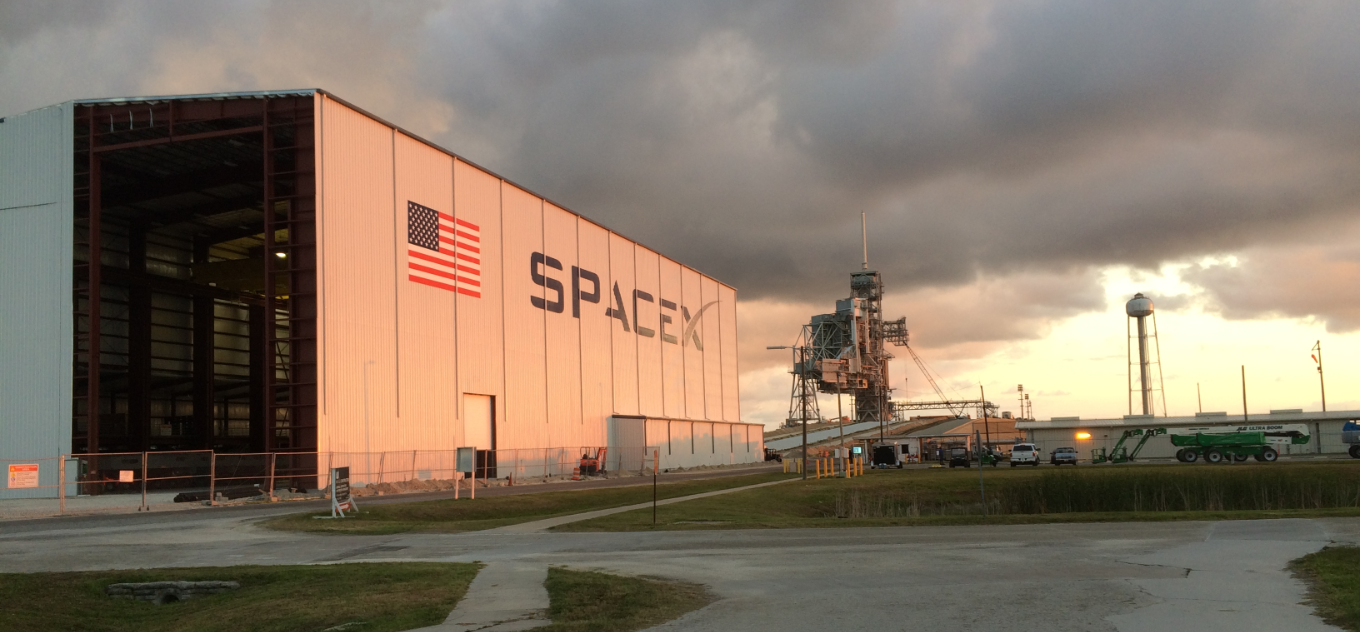Elon Musk’s SpaceX Launches Another Set of 60 Internet Satellites, Continues To Change World
Starlink is launching yet another set of 60 internet satellites tomorrow. You’ll be able to watch it live, online. They are launching the batch of satellites on a SpaceX Falcon 9 rocket. The rocket will be lifting off from Pad 39A at Kennedy Space Center in Florida. The launch will be happening at 9:22 AM Eastern Standard Time, so make sure not to miss it!
This launch is going to be the 5th time this particular Falcon 9 rocket is being used. That’s a record number of reuses for a rocket. SpaceX is the only company that even has a reusable rocket. Their rockets are designed to be used up to 100 times overall, but heat-shielding and other components have to be replaced every 10 runs. Having a reusable rocket drastically reduces the cost of a launch, because before reusable rockets, each time something went into orbit, the system carrying it into orbit was completely scrapped and had to be built new from the ground up.
We Now Have a Podcast, And we Encourage You to Check it Out by Clicking The Play Button Above
You can also do so by clicking this link.
SpaceX has been landing its reusable rocket boosters for a while now, but they are also making progress in recovering (and reusing) the payload fairing, a 6 million dollar part. A payload fairing protects a satellite during launch, and are traditionally trashed as the rocket makes its way to space. If they can get that part of the system to be re-usable as well, that will further reduce the cost of launch (Source).
Currently, earth has about 2000 or so satellites in orbit. This is everything. Telescopes, Communication Satellites, Weather Satellites, Surveillance Satellites, Etc. Starlink alone will need about 12000 of its satellites in orbit to make the system work like it’s intended to. This one project alone is going to increase the total number of man-made satellites in earth orbit by six fold. This has raised some concerns among some communities and organizations.
Astronomers are worried about SpaceX ‘whiting out’ the night sky and causing other optical disturbance and confusion among the astronomical community. This is actually a legitimate concern, considering the fact that the satellites that Starlink will be using are brighter than 99% of anything else humans have put up into the night sky. Being the problem solver he is, Elon Musks is having his private space company test darker coatings on the Starlink satellites in an attempt to cut down on the glare. Elon Musk has said that, “One way or another, we’ll make sure Starlink doesn’t inhibit new discoveries or change the character of the night sky.”
It’s looking like this new space age Internet Service Provider will be up and running, at least to some degree, a lot sooner than most of us expected. Starlink is saying that the United States and Canada will have coverage sometime in 2020, that’s this year. They are also saying that ‘near-global coverage of the populated world’ will be available sometime next year. Elon Musk already has a terminal in his house, which he has of course tweeted from, and the US government has an operational Starlink receiver in a C-12 cargo plane as we speak. The people running the test in the C-12 are reporting internet speeds over 100 times faster than their current connection.
The connection speed is 1 gigabit per second, which is about 10 times faster than an American landline internet connection. One of the most important properties of Starlink internet is not its speed, although it’s definitely very fast. It’s all about latency. Most ISP can offer a connection latency (which is the time it takes for a packet of data to make a round trip from you to where you want it to go, and back again) of 50 to 100 milliseconds. Starlink’s system, however, will be in the 25 to 35 millisecond range.
The cost of Starlink is going to be about $80 a month at first for a full gigabit per second connection. Like other ISPs, I’m sure there will be different ‘Tiers’ of service at varying prices. As the system begins to pay for itself through its early service contracts, you can expect the price to slowly fall over time until its free. That’s right. This service, like GPS, will eventually be free and will be financially supported through mechanisms other than client subscription fees (Source).
Right now, a receiving antenna for this system is about the size of a pizza box. But as the technology progresses, it will get smaller and smaller until they are single chips that can fit on a cell phone motherboard right where the cellular base-band processor used to be. When that happens, cell phone towers, and the companies that operate those networks will become obsolete. There will then be a massive industry in dismantling and recycling the huge number of currently operating cellphone towers, and their associated components and cabling. Chances are, there will not be a 6th Generation cellular network because Starlink and its competing systems will render cellular towers obsolete.




